Flight attendants of the 60s were supposed to be sexy and lonely
Categories: History
By Pictolic https://pictolic.com/article/flight-attendants-of-the-60s-were-supposed-to-be-sexy-and-lonely.htmlIn the 1960s, working as a flight attendant in the United States was like serving a gentleman's club at a high altitude and implied mandatory sexy outfits and a slight degree of gender discrimination.
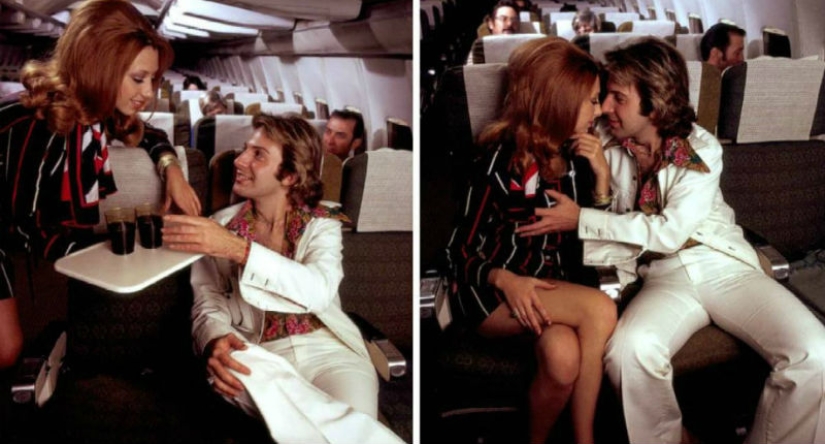
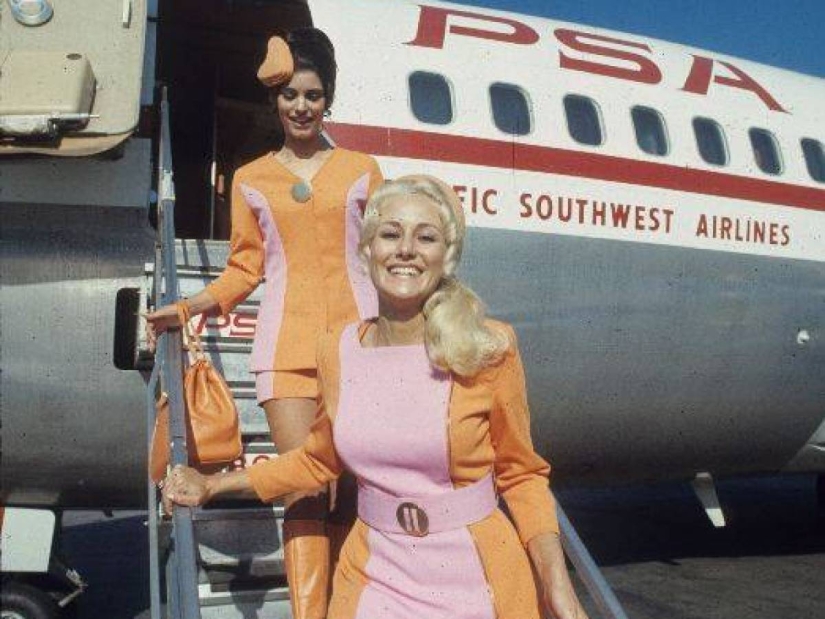
Before the stewardess position began to be perceived as a serious profession, the girls walking between the rows of seats in the 1960s and 1970s were considered exclusively as cocktail peddlers. At a time when airlines were struggling to fill planes and stay afloat, one of the most effective marketing tools was the idea of dressing flight attendants in short sexy dresses.
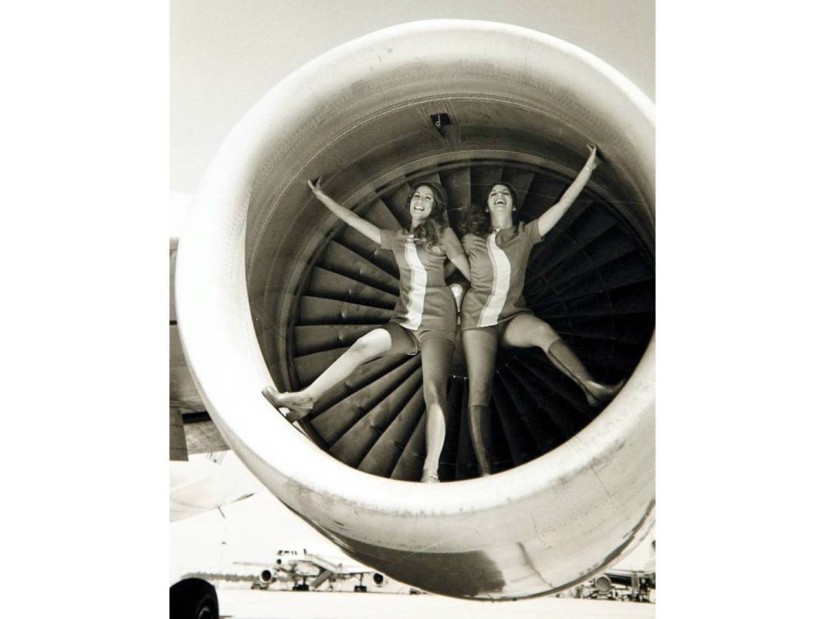
To become a flight attendant, a girl had to have strictly defined qualities. Firstly, only a single high school or university graduate could apply for such a position, and no one had ever heard of male flight attendants at that time. In addition, the girls had to be 155 to 179 centimeters tall, weigh strictly in the range from 47 to 61 kilograms and have a charming smile. The girls had to be neat, friendly and willing to wear short dresses and high-heeled shoes all working hours. Those who were selected and enrolled in training were also sent to beauty salons for trainings so that they could learn how to do hairstyles and apply makeup.
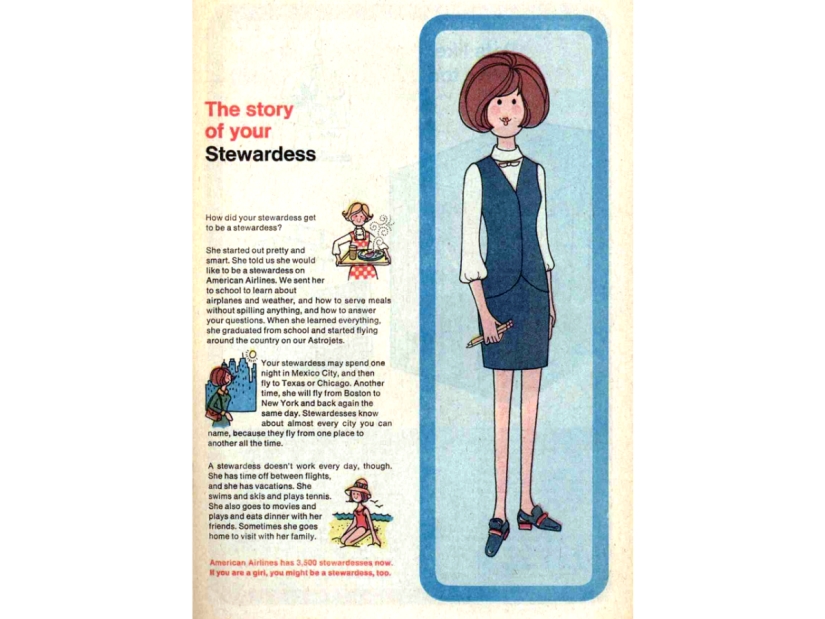
This promotional booklet, for example, tells about the daily life of a flight attendant. We are talking about the fact that this is a fairly harmless profession, involving the distribution of food to passengers and the enjoyment of daily trips to cities such as New York, Mexico City and Chicago.
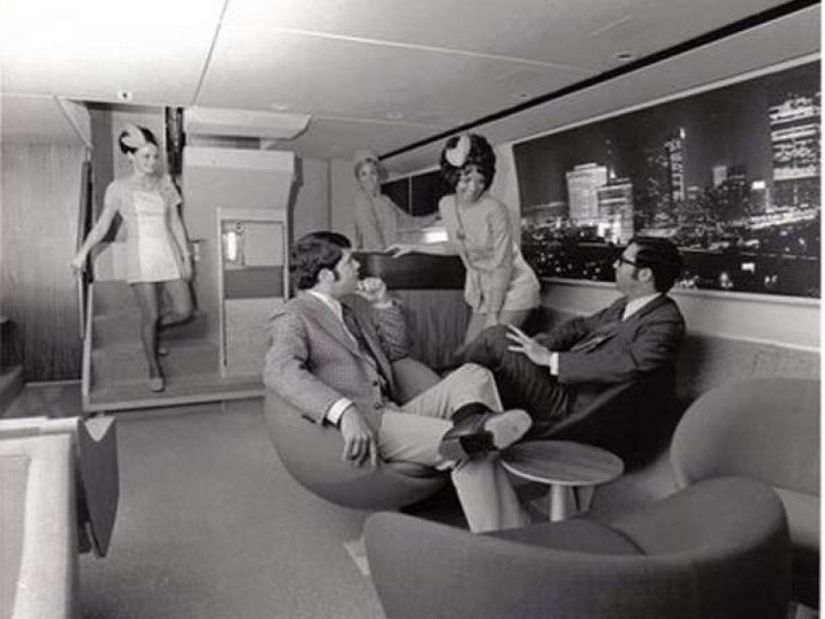
Passenger flights in those years were not like modern ones: dishes were served on real tables with tablecloths and porcelain, people were allowed to move around the cabin, and alcoholic beverages flowed like a river. Back then, the passengers were mostly young businessmen, and advertising campaigns were aimed at attracting them on board.
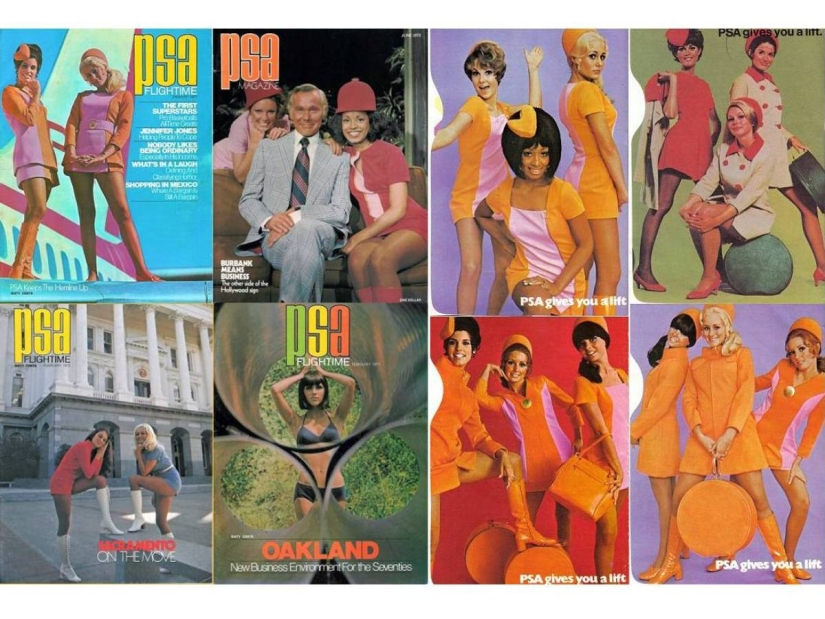
In many ways, it is precisely because of this that airlines purposefully exploited men's fantasies about sexual flight attendants. From the 1960s to the mid‑1970s, advertising booklets -for example, issued by Pacific Southwest Airlines -contained explicit, undisguised sexual overtones. The covers depicted groups of openly dressed flight attendants, accompanied by the inscription "PSA Gives You A Lift" ("PSA lifts your mood!" or "PSA will give you a lift!").

At a certain point, the Italian designer Emilio Pucci even developed a special uniform that could transform with a slight movement of the hand, becoming more and more frank: the girls started the flight in coats and hermetic helmets, and by the time of landing they remained somewhere in between long psychedelic underwear and silk trousers.
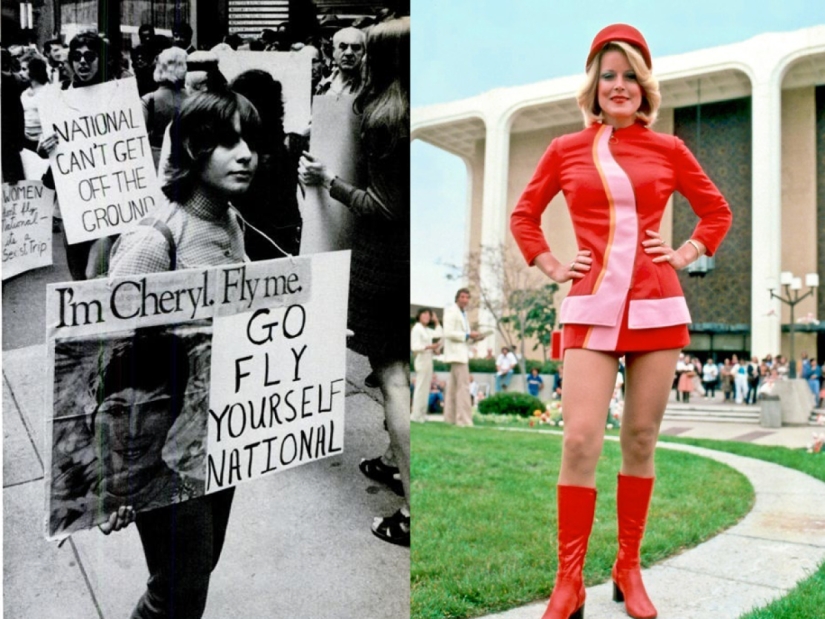
One of the most controversial advertising campaigns was carried out by the airline Fly National and subsequently became the cause of protests by the American National Organization of Women. The advertisement depicted a pretty stewardess named Cheryl and contained the slogan "Fly me" ("Take me away"). Members of the National Organization of Women staged a protest, demanding that Fly National use the image of a man in addition to the image of a woman in an advertising campaign. However, Cheryl Fioravanti herself did not agree with the protesters at the time, becoming a perfect illustration of the fact that there are women of very different moods among the flight attendants.
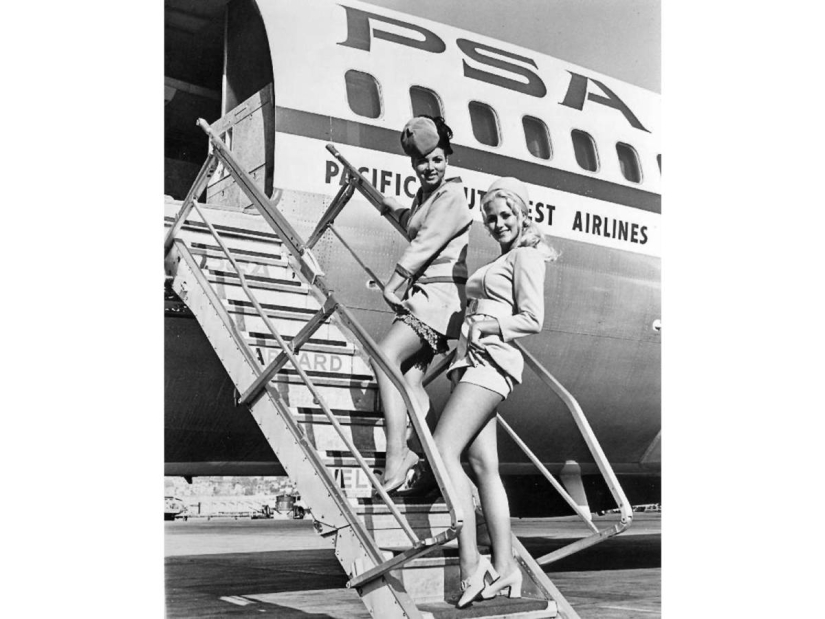
After the protests, Cheryl spoke publicly and spoke about her views on the activities of the women's rights movement: "I am scared, and I do not agree with the ideas of the women's equality movement. I do not think that housework should be shared with my spouse, because I am quite satisfied with the order of things in which I am busy with things in the kitchen, and my husband pays the bills."
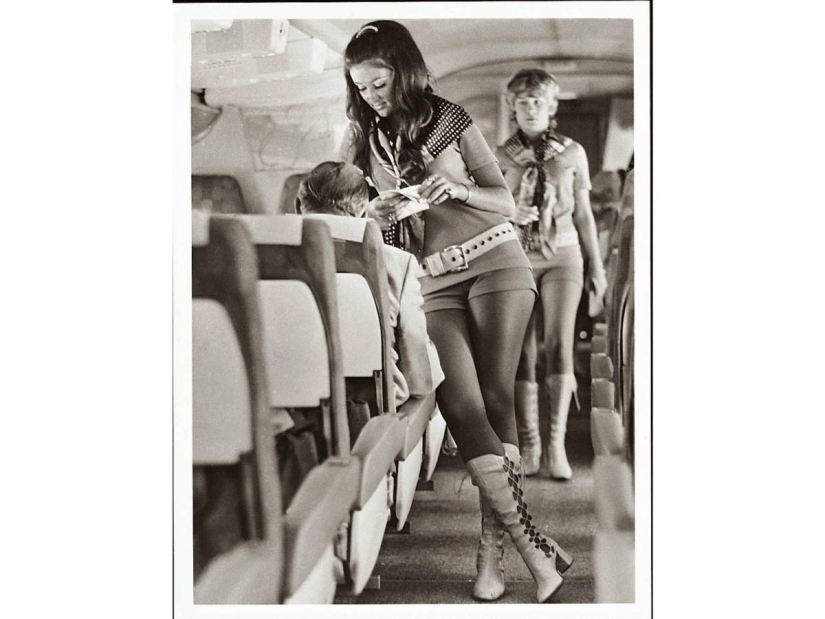
Cheryl's point of view was much more widespread than you might imagine: Sonny Morrow Sims, a former flight attendant in the 1960s, said that she got this job because she wanted to travel, and not become a teacher, nurse or someone's secretary instead.
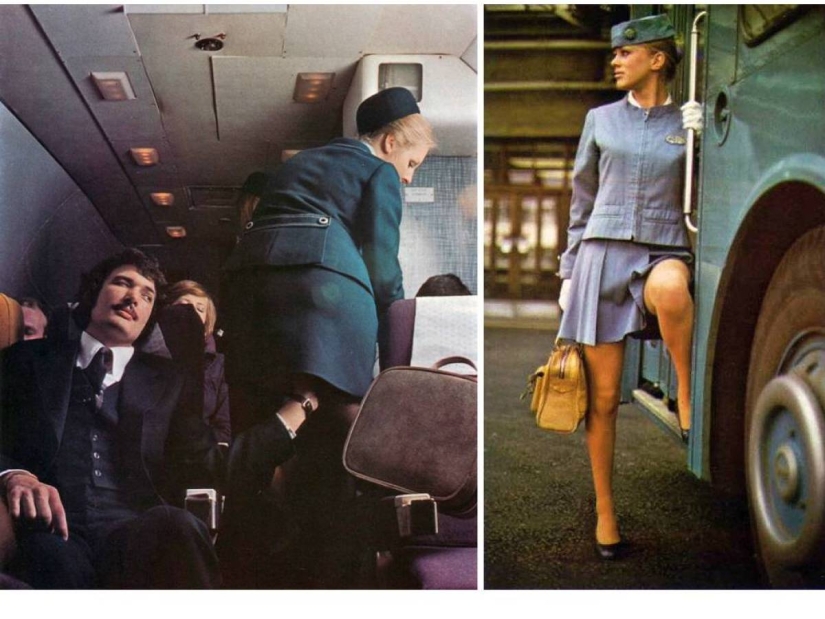
Many of the women who became flight attendants did not want an average life for themselves, the course of which could be predicted for years to come, and airline recruitment agencies were well aware of this. In the career booklets of that time, one could often find slogans like "A wedding is good! But shouldn't you see the world first?"
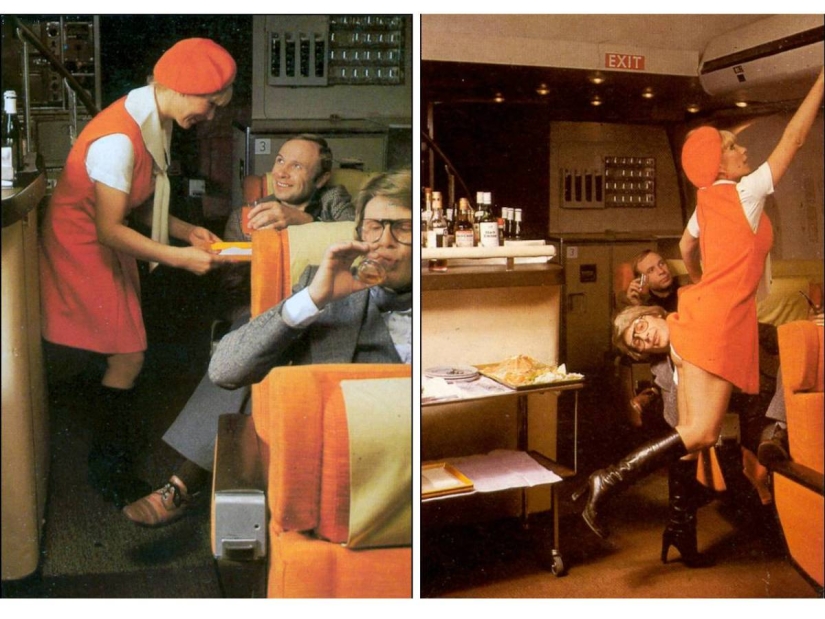
But still, the profession of a flight attendant at that time was not as attractive as it might seem at first glance. Many girls had to experience an undesirable experience as a result of the huge amount of alcohol offered, the predominance of men among passengers and the ubiquitous advertising of airlines with sexual overtones. All this, coupled with the classic male fantasies that have become, put into the heads of some customers the idea that some kind of "adventure" is waiting for them during the flight.

Paola Kane, in her 1974 article, says: "If a girl has been flying for some time, it is likely that she really hopes that male passengers will not flirt with her, get drunk and make scenes." Despite this, the use of sexuality for marketing purposes was still one of the main components of this profession. Published in 1967, the book "Coffee, Tea or Me?" ("Coffee, tea or me?"), written in the form of memoirs of fictional flight attendants and became a bestseller, only contributed to the further popularization among men of fantasies about affairs with flight attendants, as well as illusions of the availability of sex with a flight attendant as another of the services provided on board.

Despite the potential cultural implications, the form of flight attendants in the 1960s was cool. Without a doubt, her design, unfortunately, made many women the object of sexual harassment and contributed to the exploitation of female sexuality, but many of the girls were able to feel more confident after getting their dream job and proudly walking through the terminals to the planes. However, in the end, cuts in air transportation budgets and stricter flight safety rules played a role: increasing the availability of air travel put an end to the era of cocktail peddlers in short skirts and fishnet stockings.
Recent articles

Japanese artist Izumi Uchida works with digital graphics. His main activities are creating advertising images and developing ...

South Korean artist Yang-sang Kim (Young-sung Kim) conquers the world of painting with incredible paintings that look more like ...

How many on our planet there are lost cities, nobody knows for sure. But those that archaeologists are able to detect, always ...